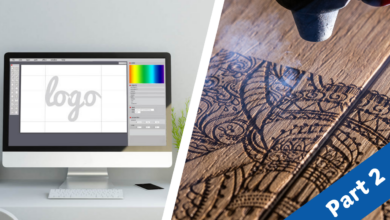The Internet and advances in technology completely transformed the way we consume media and forced graphic design to undergo a complete overhaul. But what exactly has changed? This digital transformation has made the scope of design work much larger, often blurring the lines between traditional graphic design, web, and UX design. In a busy, fast-paced world that’s full of companies vying for your attention, good visuals paired with a great experience can be what makes or breaks the success of a business or brand.
New roles for graphic designers
People still use the term “graphic designer” to describe anyone who touches some part of the design process, but it’s starting to feel a bit dated. Not because people aren’t graphic designers but because graphic design is only one part of what they do.
The type of designer I hire today is completely different from the designers I would have hired 5-10 years ago. Today, I’m looking for well-rounded people to join my team who can flow between roles of traditional, web, and UX design seamlessly, rather than relegating individuals to specific parts of the design process. Teams are now responsible for the full look, feel, and experience of a product or service. They take audiences on journeys online, immersing them in a world that appears effortless, but is, in fact, carefully curated, painstakingly planned, and backed by data.
So, what does the design process look like today? Suppose your team is working on creating an award-winning website for a B2B client. In that case, your team works together on brainstorming through concept, content, design, production, data analytics, and the ultimate roll-out of the website. As web designers then step in to build out the plan for the online experience, playing around with themes and colors, among other things, UX designers step in to oversee how the business and its customers are using the website and making the experience as smooth as possible.
Designers should be exposed to everything — the web, UX concepts, and strategies behind the decisions. They should ask themselves, who is the audience? What are we trying to achieve? And what will the experience be for the user? Designers today also have the advantage of data. They can analyze user behavior, giving them insight into whether the design and experience they created is effective.
Data analytics take the guesswork out of design
Today, it’s not enough to just have good design. Thanks to access to real-time data analytics, designers can understand the success and performance of their work, make data-driven decisions, and implement changes to designs almost immediately. How is this Facebook ad performing? Is it generating conversions? No? Then, let’s change it and launch a new one.
Another data tool in the designer’s toolkit is A/B testing. This lets you test different permutations of an asset or element — web page, ad, or email, for example — to different segments of web visitors to determine which version performs the best and generates the actions you’re looking to achieve — like clicking a link or making a purchase. The ability to test allows designers to check hypotheses and make tweaks to elements based on the behavior they observe, design best practices, and experience. One hour of work updating minor things like font sizing and weight, positions of elements, and even choice of creative could generate significant improvements in conversions.
Next steps for design leads
There’s no doubt that design will continue to evolve. So, where do we go from here? How can leaders empower their teams to become more well-rounded designers and be on top of the latest trends?
Always be ready for whatever’s next. Keep a pulse on what other companies are doing, track industry trends, read design blogs and magazines, network, always keep learning, and use the tools that you have at your disposal. It’s amazing the types of tools, knowledge, and support designers have access to today — use that to your advantage! Getting out of your comfort zone and empowering your team to feel comfortable experimenting with new tools and skills will help keep you one step ahead.
Lead by example, and don’t be afraid to fail. Leaders set the tone for the team, and if designers are paralyzed by fear of making mistakes, they may miss out on some great ideas. If an idea doesn’t work out, learn from that, pivot quickly, and try something else.
The competitive edge of good design
Design may constantly be evolving, but one thing that never changes is the importance it plays in our lives. It shapes the world around us. It’s on our phones, social media, TV, and that cereal box you pulled out of the cupboard this morning. Good design generates more loyal customers, a higher market share, and a competitive advantage overall. Simply put, good design is good business.
All that being said, what works today may not work tomorrow. That’s why it’s so important to stay on top of trends, hire people for your design team who are enthusiastic about trying new things, and cultivate a culture where people are encouraged and given the time to experiment and grow their skills.





